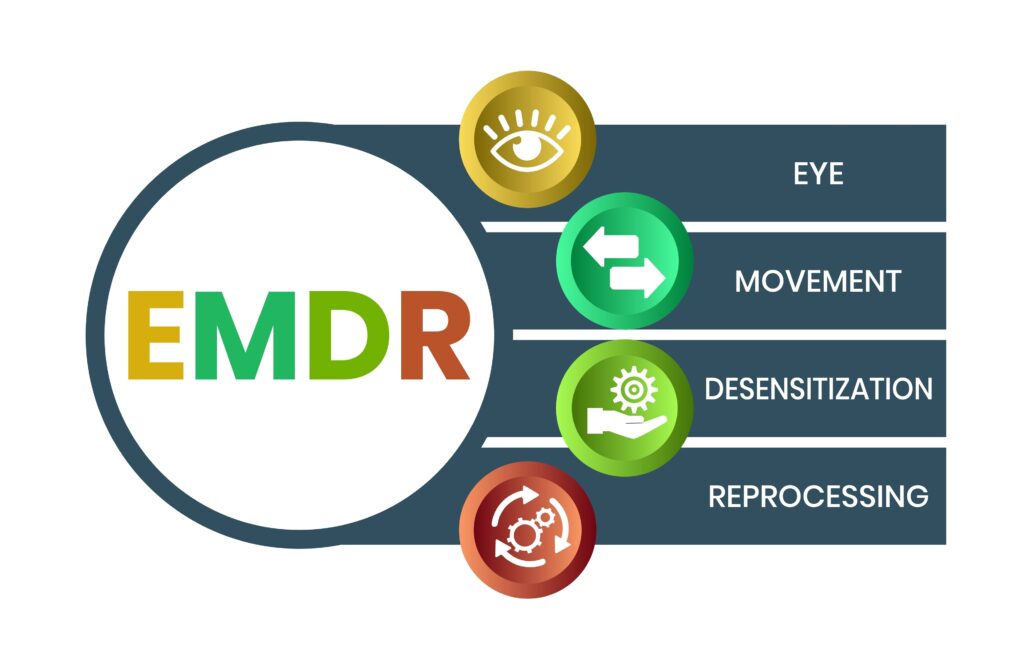When it comes to treating trauma, PTSD, and anxiety, Eye Movement Desensitization and Reprocessing (EMDR) therapy has emerged as a highly effective and scientifically backed approach. Unlike traditional talk therapy, EMDR focuses on reprocessing distressing memories to help reduce their emotional intensity and enable healing. For those struggling with past trauma or persistent anxiety, EMDR offers a promising path toward recovery and resilience.
What Is EMDR Therapy?
Developed by psychologist Francine Shapiro in the late 1980s, EMDR therapy is based on the idea that trauma and distressing experiences can get “stuck” in the brain, causing ongoing emotional pain and psychological distress. Unlike conventional talk therapies, which rely on verbal processing, EMDR utilizes bilateral stimulation, including eye movements, tapping, or auditory tones, to assist the brain in reprocessing memories and reduce their impact.
The goal of EMDR is not to erase the memory but to help you reframe it in a healthier way so it no longer triggers intense emotions or negative self-beliefs.
How Does EMDR Work?
The core of EMDR therapy involves bilateral stimulation, where both sides of the brain are activated through back-and-forth eye movements or other stimuli. This process mimics the brain’s natural activity during REM (Rapid Eye Movement) sleep, which is believed to help the mind process emotional experiences.
During a session:
- The therapist guides you to recall a distressing memory while engaging in bilateral stimulation.
- Over time, the emotional charge of the memory diminishes.
- You develop more adaptive beliefs about the event (e.g., changing from “I am powerless” to “I survived and am strong”).
Many clients report feeling a sense of relief and clarity after EMDR sessions, often noticing a reduction in anxiety, fear, or sadness associated with the traumatic event.
What Conditions Does EMDR Treat?
While EMDR is best known for its success in treating Post-Traumatic Stress Disorder (PTSD), it has also been effective in addressing a range of other conditions, including:
- Generalized Anxiety Disorder (GAD)
- Panic attacks
- Depression
- Phobias
- Grief and loss
- Addiction
- Performance anxiety (e.g., public speaking, sports)
Research consistently shows that EMDR can help clients experience faster symptom relief compared to traditional therapy methods.
The Eight Phases of EMDR Therapy
EMDR follows a structured approach with eight distinct phases:
- History-taking – Assessing your needs and establishing treatment goals.
- Preparation – Teaching relaxation techniques and setting expectations.
- Assessment – Identifying specific traumatic memories and negative beliefs.
- Desensitization – Using bilateral stimulation to reduce emotional distress.
- Installation – Reinforcing positive beliefs about the memory.
- Body Scan – Checking for lingering physical tension related to the trauma.
- Closure – Ensuring you feel stable and safe after each session.
- Re-evaluation – Reviewing progress and adjusting treatment as needed.
Benefits of EMDR Therapy
EMDR therapy offers several advantages over traditional talk therapy:
- Faster results – Some clients notice improvement after just a few sessions.
- Non-invasive – No medication is required.
- Focused on healing, not reliving – You don’t need to describe your trauma in detail to your therapist.
- Long-term relief – Reprocessing distressing memories can lead to permanent emotional shifts.
Many clients also report increased emotional resilience and a better ability to handle future stress.
Is EMDR Therapy Right for You?
If you’ve struggled with trauma, anxiety, or other emotional difficulties that haven’t responded to traditional therapy, EMDR might be worth exploring. Consider EMDR if:
- You have vivid memories of traumatic events.
- You experience emotional triggers that interfere with daily life.
- You’re seeking faster results than conventional therapy can offer.
Before beginning treatment, consult with a licensed EMDR therapist to discuss whether this approach is appropriate for your specific needs.
EMDR Therapy in New York City
EMDR therapy offers a powerful and effective solution for those dealing with trauma, anxiety, and other emotional challenges. By helping the brain reprocess painful memories, it promotes healing, fosters emotional resilience, and allows individuals to move forward with greater peace of mind.
If you’re considering EMDR, consult with your therapist to see if it’s the right step on your journey toward recovery.

